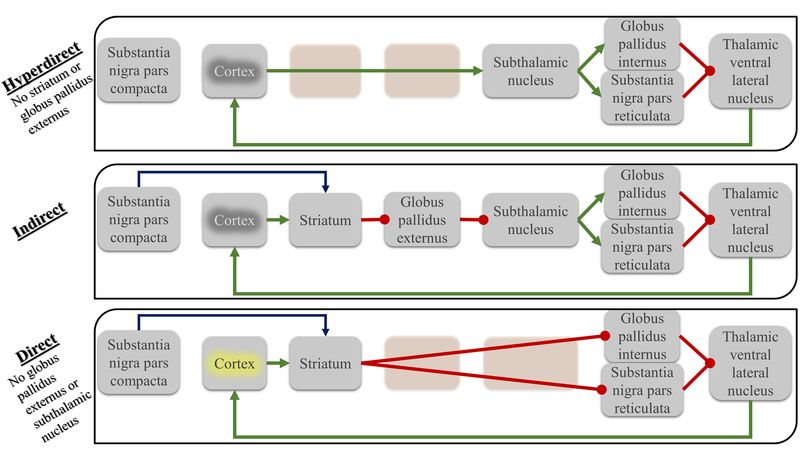Figure 1 |.
Comparison of the proposed fronto-basal ganglia-thalamic-cortical circuits. Three circuits are described: hyperdirect, indirect and direct. The direct circuit is associated with increased excitation of the motor cortex and a resultant facilitation of movement while the indirect circuits induce an opposite effect. The hyperdirect pathway is hypothesized to widely inhibit the cortex allowing direct pathway activity to release a selected motor program. PD is thought to be associated with an imbalance of activity of these circuits, characterized by a decrease in the direct pathway circuit activity and an increase in the hyperdirect and indirect pathways. Green arrows indicate a glutamatergic (excitatory) synaptic connections, red point arrows indicate GABAergic (inhibitory) synaptic connections and the blue arrows indicate dopaminergic input from the substantia nigra to the striatum. Yellow and gray highlighting of the cortex indicates excitation and inhibition, respectively.

